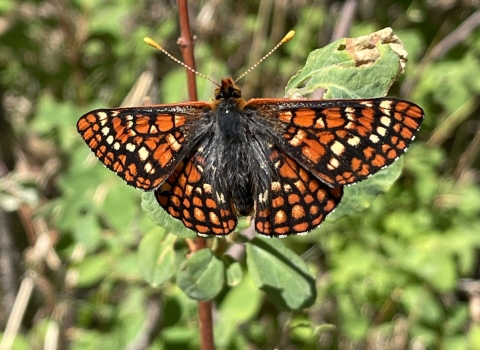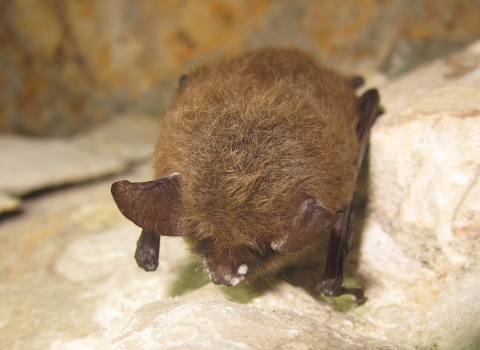As part of the U.S. Fish and Wildlife Service’s efforts to conserve and restore coastal wetlands, the Service is awarding $10.8 million to support 12 projects in seven coastal states to protect, restore or enhance over 2,000 acres of coastal wetlands and adjacent upland habitats under the National Coastal Wetlands Conservation Grant Program. Coastal wetlands are vitally important in protecting us from floods, filtering our water, supporting recreation and local economies and providing habitat for fish and wildlife. Despite their importance, there has been a steady loss of coastal wetlands.
State, local and Tribal governments, private landowners, conservation groups and other partners will contribute $10.2 million in additional funds to support these projects. These grants have wide-reaching benefits for local economies, people and wildlife – using nature-based solutions to boost coastal resilience, reduce flood risk, stabilize shorelines and protect natural ecosystems. Protecting and restoring coastal wetland habitats is critical for hundreds of fish, wildlife and plant species and the many coastal communities that depend on these ecosystems.
"Coastal wetlands are important natural infrastructure systems protecting communities from the effects of climate change climate change
Climate change includes both global warming driven by human-induced emissions of greenhouse gases and the resulting large-scale shifts in weather patterns. Though there have been previous periods of climatic change, since the mid-20th century humans have had an unprecedented impact on Earth's climate system and caused change on a global scale.
Learn more about climate change by mitigating the devastating impacts of storms, invasive species invasive species
An invasive species is any plant or animal that has spread or been introduced into a new area where they are, or could, cause harm to the environment, economy, or human, animal, or plant health. Their unwelcome presence can destroy ecosystems and cost millions of dollars.
Learn more about invasive species and sea-level rise,” said Service Director Martha Williams. “The National Coastal Wetlands Conservation Grants fund projects that help recover coastal-dependent species, enhance flood protection and water quality, provide economic benefits and increase outdoor recreational opportunities for our coastal communities."
The 2024 grants will help support recovery of threatened and endangered species, enhance flood protection and water quality, provide economic benefits to coastal communities and increase outdoor recreational opportunities.
The Service annually awards grants of up to $1 million to states and territories based on a national competition, which enables states to identify and address their highest conservation priorities in coastal areas. Since 1992, the Service has awarded more than $500 million in grants under the program.
States receiving funds this year are California, Florida, Maine, Massachusetts, North Carolina, Texas and Washington. Examples of the projects funded by the 2024 grant program, include:
Coastal Wetland Conservation and Shoreline Protection in East Galveston Bay
The Texas Parks and Wildlife Department, in partnership with Galveston Bay Foundation, is awarded $1 million to acquire a conservation easement conservation easement
A conservation easement is a voluntary legal agreement between a landowner and a government agency or qualified conservation organization that restricts the type and amount of development that may take place on a property in the future. Conservation easements aim to protect habitat for birds, fish and other wildlife by limiting residential, industrial or commercial development. Contracts may prohibit alteration of the natural topography, conversion of native grassland to cropland, drainage of wetland and establishment of game farms. Easement land remains in private ownership.
Learn more about conservation easement to protect approximately 420 acres of coastal wetlands in East Galveston Bay and construct a living shoreline on the north shore of the East Bay. The easement will preserve the coastal wetlands in their natural state and prevent land fragmentation and conversion to alternate land uses. The living shoreline will include an offshore breakwater composed of concrete built parallel to the shoreline to reduce coastal erosion and create additional tidal wetland by trapping sediment.
Newport River Partnership Phase III
The North Carolina Department of Environmental Quality, in partnership with North Carolina Coastal Land Trust, is awarded $1 million to acquire 897 acres in Carteret County, North Carolina. This project is the final phase of a three-phase effort to protect over 2,900 acres of contiguous tracts with scenic, recreational and ecological value along the Newport River. The 897-acre parcel consists of approximately 15 acres of maritime forest, 562 acres of managed pine stands, 100 acres of bottomland hardwoods and 220 acres of coastal marsh.
Elwha River Floodplain Acquisition and Restoration
The Washington State Department of Ecology, in partnership with North Olympic Land Trust and the Lower Elwha Klallam Tribe, is awarded $1 million to acquire and restore critical coastal wetlands in the Elwha River watershed of Clallam County, Washington to acquire 17 acres of land containing 0.3 miles of Elwha River mainstem, floodplain and associated buffers. It will restore 37 acres of coastal wetlands and riparian riparian
Definition of riparian habitat or riparian areas.
Learn more about riparian buffers on the acquired property and adjacent lands. The Tribe will undertake an extensive in-stream habitat restoration, including installation of 20 engineered log jams to emulate the historic river processes and the habitat benefits once provided by large woody debris.
Wetlands in coastal watersheds are diverse and complex ecosystems that are vital to the nation’s economy and an important part of the nation’s natural heritage. Coastal wetlands in the United States include both salt marshes in estuaries and freshwater wetlands that extend inland within the coastal watersheds. They provide billions of dollars in benefits to people and wildlife ranging from drinking water filtration, storm buffering and flood control, and contributions to the recreational and outdoor sports economies.
More information is available online at: https://www.fws.gov/service/national-coastal-wetlands-conservation-grants.
The National Coastal Wetlands Conservation Grant Program is administered by the Service and funded in part by taxes or import duties collected from the sale of recreational fishing equipment, boats, electric motors and motorboat and small engine fuels under the authority of the Dingell-Johnson Sport Fish Restoration Act. The billions of dollars generated through recreational angling, boating, waterfowl hunting and birdwatching benefit communities in the vicinity of wetlands restoration projects.



